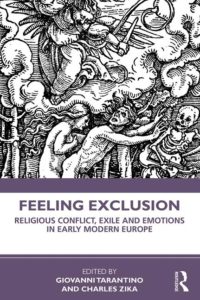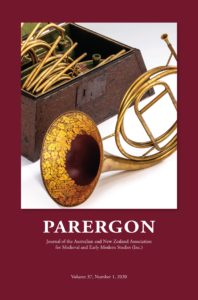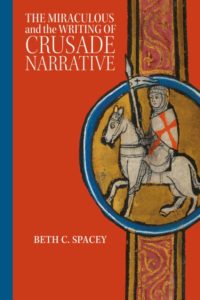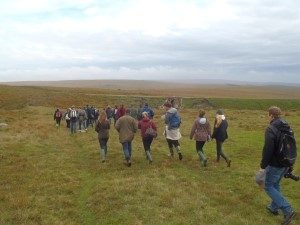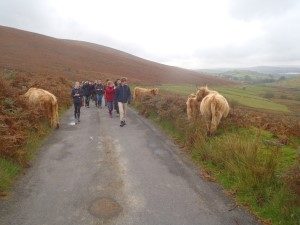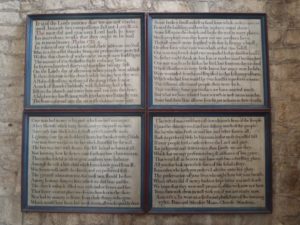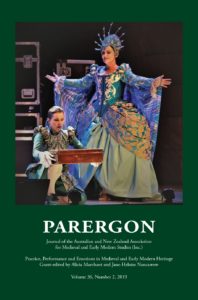We asked members of Parergon‘s Early Career Committee to tell us about a Parergon article that stood out for them and why they found it valuable for their research. In this post, Francesca Battista discusses Kathleen Neal’s ‘Words as Weapons in the Correspondence of Edward I with Llywelyn ap Gruffydd’, Parergon 30.1 (2013), pp. 51-71 [DOI: 10.1353/pgn.2013.0051]
The one-day workshop on Letter Writing in the Middle Ages, held at the Bush House, King’s College London in 2019 and organized by Simon Thomas Parsons, Thomas W. Smith and Anaïs Waag, not only offered a great opportunity to be engaged in interesting debates on medieval epistolary culture, but it also allowed me to meet brilliant scholars and hear about their meaningful work. A stimulating exchange of ideas after the conference with one of the attendees, Amanda McVitty, and the paper presented by Kathleen Neal, introduced me to valuable scholarship on dictamen and related areas of study from Australia and New Zealand, which was unknown to me. Neal’s article that I am going to discuss in this post is part of this story. Her research method represents a great source of inspiration for the dictaminal research I am conducting.
The influence of ars dictaminis on the shaping of chancery style in England was long ago recognized by Kantorowicz, Denholm-Young, and more recently pointed out by Camargo, Richardson, and Grévin, among others. However, the investigation of the ways in which from the thirteenth century dictamen started to be used as a royal political communication tool is still not fully explored.
Neal’s article provides a relevant contribution to the field of investigation, offering a compelling reading of the letters exchanged between Edward I of England and Llywelyn ap Gruffydd, Prince of Wales, during the time period between the Anglo-Welsh wars (1276-77, 1282-83). This correspondence is read drawing attention to its dictaminal shape and interconnected political intent. Furthermore, it also illustrates a method based on the study of the epistolary drafting process for interpreting royal letters, not as “relics of a well-developed medieval bureaucracy,” but rather “as episodes of strategic communication” (p. 52).
The article concentrates on a single letter which is offered as an example of how Edward I’s letters functioned as rhetorical political artifacts in connection to the Anglo-Welsh struggle. It is a royal reply of 1280 to one or two of Llywelyn’s letters which were concerned, above all, with the issue of the possession of Arwystli region. The Treaty of Aberconwy of 1277, which marked the capitulation of Llywelyn to Edward I, left open the Welsh dispute over this land. As a result, rights to it were claimed equally by the Prince of Wales and Gruffydd ap Gwenwynwyn, ally of the king. In his letters addressed to the king, Llewelyn complains because the king was not able to settle this dispute in his Parliament. Such criticism resulted in an indirect aggression to the heart of Edward I’s monarchy.
Neal brilliantly shows how Edward’s reply appears to be a rhetorical means of legitimization of the manner of power execution in the hands of the superior party. Accordingly, for example, in the salutatio the address terms of “beloved and faithful”, which were used in line with the Anglo-Norman epistolary practices rather than on the basis of those of the Welsh chancery, stress the Prince of Wales’ subordination to the king and also show who “was willing to conduct their discussion” (p. 61).
Likewise, the hypertrophic narratio would suggest “that a hostile reception was anticipated” and indicates “how important it was in royal and Chancery circles that an English construction of the situation be articulated” (p. 61). It could be also argued that the length of the narratio is an especially significant aspect to be considered as a clear transgression of dictaminal norms. Handbooks of letter writing prescribed that narration had to be brief and concise, and English artes dictandi were not an exception. One of the most relevant merits of this article is its attentive examination of the editorial work involved in the production of this letter. Edward’s letter survives as a draft and all the draft’s changes and deletions represent a conscious use of language which is itself political. Notably, despite the fact that their consideration is necessary for a complete reading of the letter, they had been neglected in previous research. An edition and a translation of the letter, along with the annotation of the deletions and additions in the apparatus, are for the first time provided in the appendix of this article.
In conclusion, as shown by Neal, royal letters extant in the form of draft or not, can be regarded as a fruitful place for the investigation of the monarchy’s dictaminal construction of power. This applies to 13th century Britain, as in the specific case of this paper, but it could be extended to a European level to other royal chanceries. For the richness of its investigation, this article represents a wide range of scholarly interests. It can be especially recommended to historians of medieval Britain and Europe, specialists of dictamen, scholars of political communication and kingship, and researchers of medieval textuality and scribal activity.
Parergon can be accessed via Project MUSE (from Volume 1 (1983)), Australian Public Affairs – Full Text (from 1994), and Humanities Full Text (from 2008). For more information on the current issue and on submitting manuscripts for consideration, please visit https://parergon.org/

